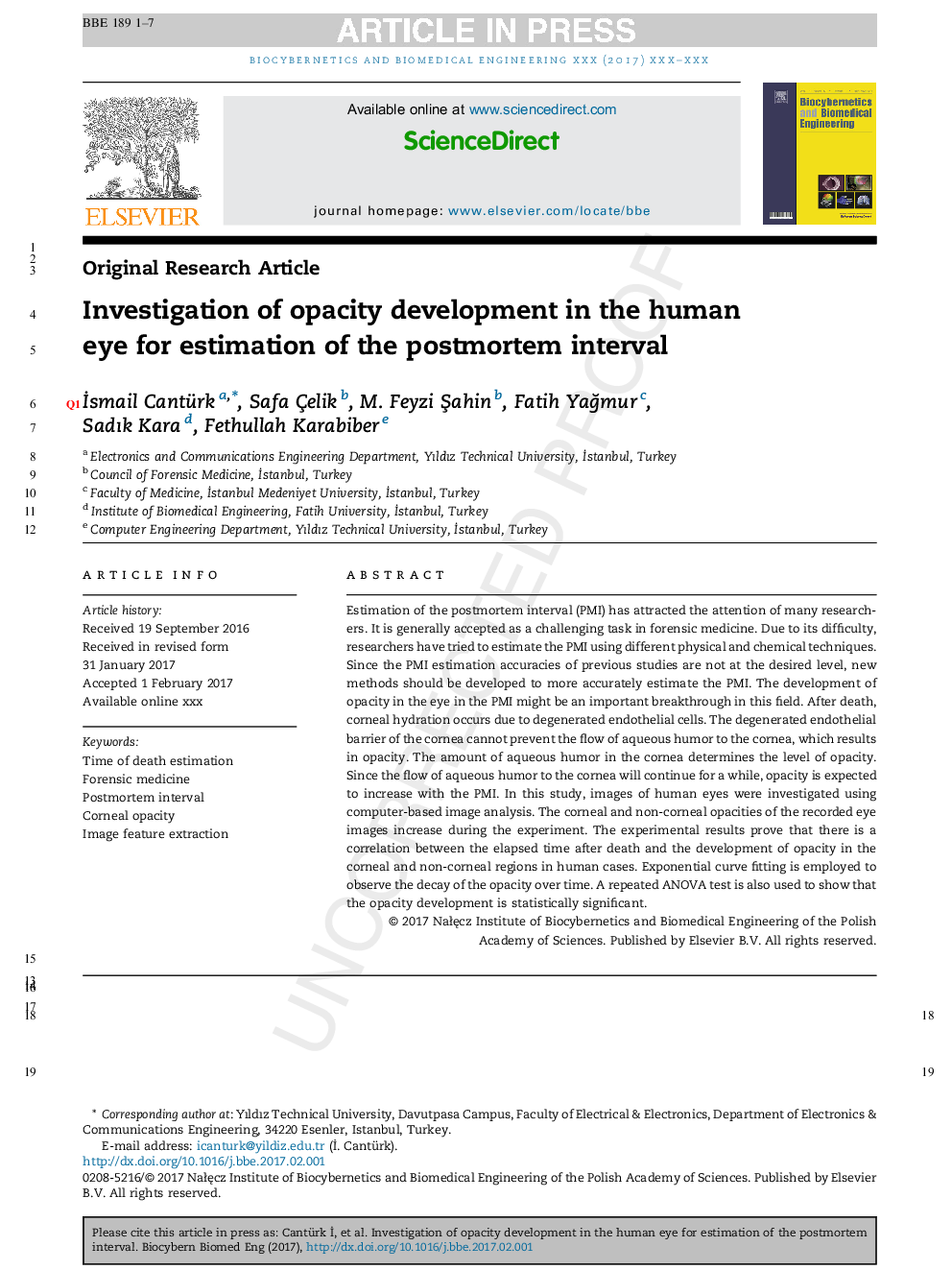| کد مقاله | کد نشریه | سال انتشار | مقاله انگلیسی | نسخه تمام متن |
|---|---|---|---|---|
| 6484223 | 1416076 | 2017 | 7 صفحه PDF | دانلود رایگان |
عنوان انگلیسی مقاله ISI
Investigation of opacity development in the human eye for estimation of the postmortem interval
ترجمه فارسی عنوان
بررسی میزان نفوذ در چشم انسان برای برآورد فاصله پس از خرابی
دانلود مقاله + سفارش ترجمه
دانلود مقاله ISI انگلیسی
رایگان برای ایرانیان
کلمات کلیدی
زمان برآورد مرگ، پزشکی قانونی، فاصله پستمورمت، کدورت قرنیه، استخراج ویژگی تصویر،
موضوعات مرتبط
مهندسی و علوم پایه
مهندسی شیمی
بیو مهندسی (مهندسی زیستی)
چکیده انگلیسی
Estimation of the postmortem interval (PMI) has attracted the attention of many researchers. It is generally accepted as a challenging task in forensic medicine. Due to its difficulty, researchers have tried to estimate the PMI using different physical and chemical techniques. Since the PMI estimation accuracies of previous studies are not at the desired level, new methods should be developed to more accurately estimate the PMI. The development of opacity in the eye in the PMI might be an important breakthrough in this field. After death, corneal hydration occurs due to degenerated endothelial cells. The degenerated endothelial barrier of the cornea cannot prevent the flow of aqueous humor to the cornea, which results in opacity. The amount of aqueous humor in the cornea determines the level of opacity. Since the flow of aqueous humor to the cornea will continue for a while, opacity is expected to increase with the PMI. In this study, images of human eyes were investigated using computer-based image analysis. The corneal and non-corneal opacities of the recorded eye images increase during the experiment. The experimental results prove that there is a correlation between the elapsed time after death and the development of opacity in the corneal and non-corneal regions in human cases. Exponential curve fitting is employed to observe the decay of the opacity over time. A repeated ANOVA test is also used to show that the opacity development is statistically significant.
ناشر
Database: Elsevier - ScienceDirect (ساینس دایرکت)
Journal: Biocybernetics and Biomedical Engineering - Volume 37, Issue 3, 2017, Pages 559-565
Journal: Biocybernetics and Biomedical Engineering - Volume 37, Issue 3, 2017, Pages 559-565
نویسندگان
Ä°smail Cantürk, Safa Ãelik, M. Feyzi Åahin, Fatih YaÄmur, Sadık Kara, Fethullah Karabiber,
